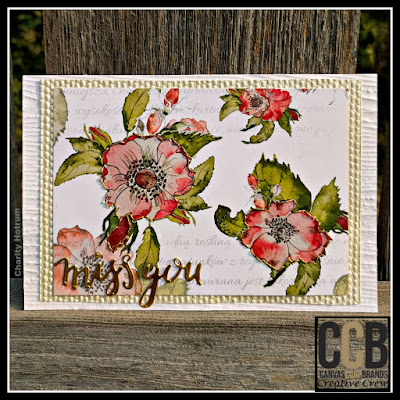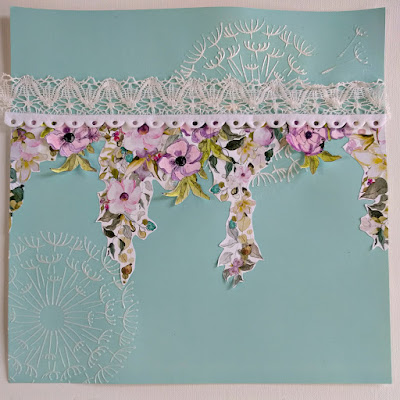These mixed media cards offer hand stitching details. They feature layers of specialty papers along with watercolor images, hemp cord, and sentiment in flowing script. Canvas Corp's "Nautical" and "Compose Your Life" collections are represented here.
Directions:
Step 1: Stamp image on watercolor paper, heat emboss, paint with watercolors.
Embossing the image gives your watercolors boundaries. The paint is more likely to stay exactly where you place it when you use this technique.
Step 2: Cut and adhere layers of cardstock.
The Mermaid is 4.5 x 3". The Anchor paper is 5.5 x 3.75". The Kraft paper is 8 x 6", folded.
Step 3: Position Cord around mermaid perimeter, stitch in place.
My final cord length is about 20".
My final cord length is about 20".
I pierced holes at each corner of my image as well as on the sides. I started the thread at the back, ran it through the paper to the front, over the cord, and to the back through the same hole. I tied off each stitch before progressing to the next one.
Step 4: Tie the cord into a loose square knot at the top of the card. Attach the top of the knot with adhesive or a couple more stitches to hold it in place.
Mermaids are one of my favorite images. This imaginary creature of two worlds can be painted any color. Flowing hair, beautiful voice, and centuries of legends make her untouchably perfect. Yet, this lovely being conforms to each persons imagination just as they will it.
This second card embraces the watercolor style with a little less work. Layers of hand made papers are topped with printed watercolor roses. Gold stitching outlines the flowers and gold foiled paper scripts the sentiment.
Directions:
Step 1: Cut papers. Adhere Roses to Ivory paper.
Roses Are Red paper is cut to 3 1/2 x 5". Ivory Seed embossed paper is cut to 3 5/8 x 5 3/8". Wood Grain embossed paper is cut to 4 x 6". White Cardstock is cut to 8 x 6" and folded.
Roses Are Red paper is cut to 3 1/2 x 5". Ivory Seed embossed paper is cut to 3 5/8 x 5 3/8". Wood Grain embossed paper is cut to 4 x 6". White Cardstock is cut to 8 x 6" and folded.
Step 2: Outline roses with gold thread using a back stitch.
Secure the ends with tape so the knot doesn't pull through. Stitching on paper must be done gently or the thread will cut the paper or leave rough edges.
Step 3: Adhere Ivory paper to Woodgrain paper and Woodgrain to folded White cardstock.
Step 4: Cut sentiment from Gold Foiled paper with Die. Adhere to card front.
In my region wild roses bloom in extravagant patches by my birthday. They seem as happy to be alive as I am! A card bearing their lovely form is never out of style.
These cards were originally posted on the CCB blog in 2019.
Craft On!
~charity~

































.jpg)



























